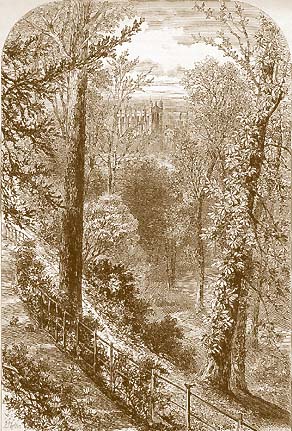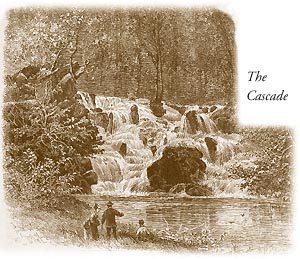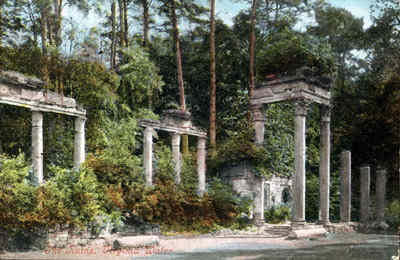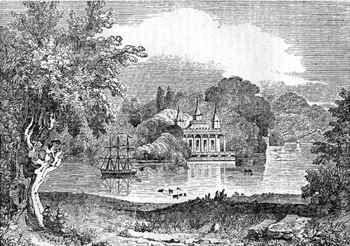July 12.
With Mr. Kenyon and Hillard, I joined the Jays in a visit to Stoke Poges, where is Gray's churchyard; then to Eton, where we found six or seven hundred boys, the flower of English youth, some of them at cricket, on the green; others strolling in groups and pairs; some rowing in the river; and recalled Lamb's remark, "What a pity that these fine boys should be changed into frivolous members of Parliament!"
Kenyon recalled verses of his own, of which I only remember, —O give us back our lusty youth!and the whole place remembered Gray. Kenyon asked if ever a dirty request was couched in more beautiful verse than in the hints touching livings and preferments, addressed to the Duke of Grafton, in the Cambridge Installation Ode.Thy liberal heart, thy judging eye,After seeing the chapel, we went to Windsor, where the tickets of the Jays procured admittance for the whole party to the private apartments of Her Majesty. We traversed the long corridors which form the gallery of sculpture and paintings, then the chambers, dining-room, and reception rooms of this palace. The green expanse of trim counties which these windows command, beginning with a mile of garden in front, is excellent. Then to the Royal Mews, where a hundred horses are kept; listened reverentially to all that the grooms told us of the favorite horses; looked at the carriages, etc. If hard came to hard, the camel has a good deal of hump left to spend from.
The flower unheeded shall descry,
And bid it round heaven's altars shed
The fragrance of its blushing head;
Shall raise from earth the latent gem
To glitter on the diadem.
In St. George's Chapel, Mr. Kenyon pointed out the true character of stained-glass windows, which is not in large figures or good drawings, but in gem-like splendor and condensation. In like manner he quoted Lady Morgan's notion on carpets, that they should be spread, not nailed; and there should not be great elaborate figures, but such a disposition of forms and colors that they should seem like jewels trodden in.
From Windsor we went to Virginia Water, the toy lake and toy fishing-house of George IV. (But the expense squandered on these grounds does not save them from the ridicule of a tawdry counterfeit, and the spectator grudges his time. Here is a made waterfall; or a made ruin, the "Persepolis of the woods," constructed of stones brought from the ruins of Carthage.) Two red flags hanging from the little frigates afloat were quite too important in the raree-show. We suspected the two or three people in the boat were hired to sit there by the day; and the eye mistrusted the houses might be pasteboard and the rocks barley candy.
Mr. Kenyon: This probably refers to the poet John Kenyon, poet and patron of the arts. See his obituary in the Gentleman's Magazine here.
Hillard: Emerson probably refers to George Stillman Hillard, an American author and lawyer who was traveling in England at that time.
The Jays: This may refer to John Clarkson Jay (1808-1891) and his wife. Jay was a well-known American conchologist (collector and examiner of shells).
"frivolous members of Parliament": It was Charles Lamb's older brother John who made this remark.





Regarding the "Cambridge Installation Ode", see the Cambridge History of English and American Literature.








Some sources:
Journals Of Ralph Waldo Emerson 1820-1872, with Annotations, edited by Edward Waldo Emerson and Waldo Emerson Forbes; Vol. VII, 1845-1848 (London, Constable & Co.; Boston And New York Houghton Mifflin Company, 1913)
Journals Of Ralph Waldo Emerson 1820-1872, with Annotations, edited by Edward Waldo Emerson and Waldo Emerson Forbes; Vol. VII, 1845-1848, (New York, Houghton Mifflin Company, 1912)




No comments:
Post a Comment